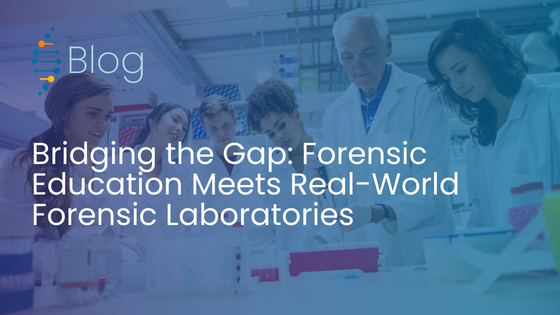This article was generated with the assistance of artificial intelligence. However, all content has been thoroughly reviewed and curated by a human editor before posting to guarantee accuracy, relevance, and quality.
The human microbiome—comprising trillions of microorganisms found in the gut, skin, mouth, and other body parts—has long been recognized for its role in human health. Now, however, forensic scientists are exploring its potential to solve crimes. A 2024 review by Amy Arabella Singh and Moses Okpeku, published in Forensic Science International: Reports, highlights how advances in microbiome analysis are transforming forensic investigations. The study delves into the ways human microbiomes could aid in everything from personal identification to determining postmortem intervals and even linking individuals to specific geographic locations.
While still in its infancy, forensic microbiome analysis holds significant promise. By leveraging the unique microbial signatures that vary from person to person, investigators may soon be able to unlock a wealth of information to assist in criminal cases. The review outlines both the strengths and limitations of this emerging field and offers a glimpse into how the microbiome could complement traditional forensic methods.

The Human Microbiome: A New Forensic Frontier
The human microbiome refers to the genetic material of all the microorganisms—bacteria, viruses, fungi, and more—that inhabit the human body. Every individual has a distinct microbiome, influenced by factors such as lifestyle, diet, geography, and even intimate relationships. This uniqueness makes microbiome analysis an exciting tool for forensic scientists. By examining the specific microbial communities left behind on objects, skin, or in various body fluids, investigators can gather new kinds of evidence, particularly in cases where traditional DNA samples are limited or unavailable.
Singh and Okpeku’s review emphasizes the potential for microbiomes to be used in a variety of forensic applications, including postmortem analysis, geographic identification, personal identification, sexual assault cases, and bite mark analysis. While the use of human microbiomes is not yet a staple of forensic casework, the review highlights key advancements that are pushing the field toward broader adoption.
Forensic Applications of the Microbiome
Postmortem Analysis
One of the most promising uses of microbiome analysis in forensics is postmortem analysis. After death, microbial communities in the body change as decomposition progresses. By analyzing the microbiome at various stages of decomposition, scientists can estimate the postmortem interval (PMI), providing clues about the time of death. Different microbial species colonize the body at each stage, and some microbes appear in specific anatomical regions at predictable times.
For example, the Clostridium species often dominate during the later stages of decomposition, while aerobic organisms give way to anaerobic ones as oxygen in the body depletes. Studies have shown that these microbial shifts can be used to create models that estimate PMI with increasing accuracy. Despite the potential, challenges remain in standardizing the methods for microbiome-based PMI estimation, particularly across different environmental conditions and geographic locations.
Geographical Identification
The human microbiome is highly influenced by geography. Microbes vary based on factors like climate, diet, and industrialization, making it possible to use microbiome analysis to identify where a person has lived or traveled. This capability could be particularly valuable in cases involving human trafficking, missing persons, or unidentified bodies. Microbiomes from specific geographic regions, or even individual cities, can serve as “microbial fingerprints,” linking individuals to certain locations.
Studies have demonstrated the effectiveness of machine learning models in predicting an individual’s location based on microbiome analysis. These models analyze the presence and abundance of specific microbial species that are unique to different geographic areas. While promising, further research is needed to refine these models and address factors like lifestyle changes, which can alter a person’s microbiome.
Personal Identification
Because the microbiome is unique to each individual, it holds potential for personal identification in forensic cases. Recent studies have shown that microbial DNA left on surfaces can be used to link individuals to crime scenes with high accuracy. For instance, the microbes found on a person’s skin or in their saliva can be matched to the microbiome traces left on everyday objects like cell phones or door handles.
One study cited in the review found that microbial signatures from skin and household surfaces can be matched to the individuals who touched those surfaces, even weeks after contact. This opens up new possibilities for identifying suspects in cases where traditional forensic evidence, such as fingerprints or DNA, is absent. However, microbial contamination and the potential for indirect transfer remain challenges that need to be addressed.
Sexual Assault Cases
The genital microbiome has also been explored for its forensic potential in sexual assault cases. During sexual contact, microbes can be transferred between individuals, and these microbial signatures can be analyzed to confirm whether such contact occurred. This could be especially useful in cases where DNA evidence is degraded or unavailable.
In one study, researchers analyzed the pubic hair microbiomes of individuals and found that the microbiome could be used to distinguish between individuals with considerable accuracy. Additionally, studies have demonstrated that microbes transferred during sexual contact can persist for several hours, providing a valuable window for investigators to collect forensic evidence.
Bite Mark Analysis
Bite marks are common in cases of assault and child abuse, and they can be difficult to analyze using traditional methods. Microbiome analysis offers a new approach. By analyzing the oral bacteria transferred during a bite, forensic scientists can potentially link a bite mark to an individual. Research has shown that Streptococcus species, common in the mouth, can be used to differentiate between individuals based on their unique bacterial strains.
While still in the experimental stages, bite mark microbiome analysis could provide crucial evidence in cases where human DNA is difficult to recover. Early studies have shown promising results, with researchers able to match bite marks to the individuals who made them based on microbial signatures.
Challenges and Limitations
Despite the significant potential of microbiome analysis in forensic science, several challenges remain. One of the primary hurdles is the lack of standardization in microbiome sampling and analysis techniques. Without consistent methods, it can be difficult to compare results across different studies or cases, which limits the widespread application of these methods.
Another challenge is the sensitivity of microbiomes to environmental changes. Factors like temperature, humidity, and even a person’s diet or recent travel can affect the composition of their microbiome, complicating efforts to use microbial signatures for forensic purposes. Additionally, the microbiome is constantly evolving, which raises questions about the stability of microbial evidence over time.
Moreover, privacy concerns have been raised about the use of microbiomes in forensics. The human microbiome can reveal a great deal about a person’s lifestyle, health, and even their medical history, raising ethical questions about how this data is collected and used in criminal investigations.
Future Directions
To fully realize the potential of microbiome analysis in forensics, further research is needed. One area of focus should be the development of standardized protocols for microbiome sampling, storage, and analysis. Additionally, building large, reliable microbiome databases will be crucial for improving the accuracy of forensic microbiome applications.
Researchers also need to explore how microbiomes interact with the environment, particularly in cases involving indirect transfer or contamination. Understanding these dynamics will help forensic scientists determine the significance of microbial evidence and reduce the risk of false leads.
With continued advancements in next-generation sequencing technology and bioinformatics tools, the future of microbiome analysis in forensic science looks promising. By combining microbial data with traditional forensic methods, investigators may be able to uncover new layers of evidence that were previously inaccessible.
Conclusion
The use of human microbiome analysis in forensic investigations represents a cutting-edge development in the field. From postmortem analysis to personal identification and geographic tracing, the microbiome offers a wealth of information that could complement traditional forensic techniques. While challenges remain—such as the need for standardized methods and the risk of contamination—researchers are making strides toward integrating microbiome analysis into routine forensic casework.
As the field evolves, the human microbiome could become an essential tool for forensic scientists, helping to solve crimes that might otherwise go unsolved.
Citations
Singh, A.A., & Okpeku, M. (2024). Emerging methods of human microbiome analysis and its forensic applications: Review. Forensic Science International: Reports, 9, 100355. https://doi.org/10.1016/j.fsir.2024.100355

